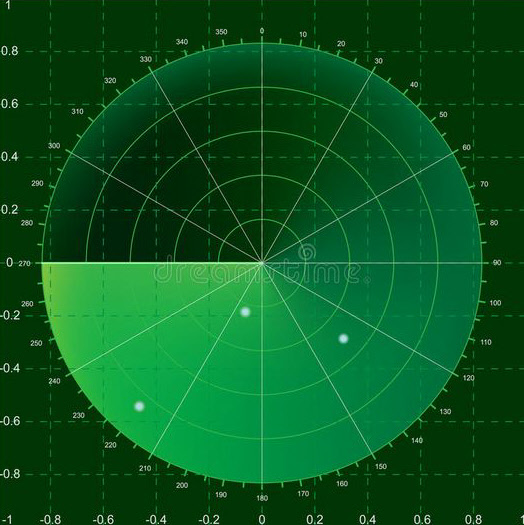Evolutionary ethics and moral realism

What is the truth status of moral judgements in evolutionary ethics? In what sense can they be true or false?
Reasons and the good
When does a fact or situation give rise to a reason to take moral action?
The metaphor of the radar screen: objects (facts) show up on a moral domain’s radar screen when they are significant to that moral domain’s joint goal and its supporting features and values.
Moral domains, features, values and normativity
Normativity is the pressure to achieve goals. Moral normativity is the joint pressure to achieve joint goals.
An evolved moral domain is defined by its joint evolved goal (thriving, surviving,
and/or reproducing) and its method of achieving it (some kind of collaboration).
Every moral domain shares the same features, although some have unique features
of their own. Importantly, every feature of moral domains is a source of normativity,
since they are all in the service of achieving the joint goal. A moral value is
a policy or sub-
Thriving, surviving and reproducing are self-
Anything that is a source of moral normativity carries a moral imperative: it means that morally, you feel you should do X; there is pressure to X. As such, if you do not do X, you may feel you have done something morally wrong. Hence, each in its own particular way, any feature of any moral domain provides an impartial source of normativity against which to morally evaluate actions, intentions or attitudes. So, a multiplicity of values implies a multiplicity of factual judgements, one for each value. We may judge an action, intention or attitude according to “what my partners want me to do”; “what is good for my reputation”, “value a”, “value b”, value c”, etc. This judgement or measurement may then be accurate or inaccurate; correct or incorrect; true or false.
Opportunities and threats
An opportunity is defined as something that actually or potentially promotes the joint goal or its associated features or values (that are all in the service of the joint goal). We wish to embrace opportunities and use them to promote our goals and values.
A threat is the opposite: something that threatens or prevents the joint goal and its associated features or values. We wish to take action to avoid or prevent threats.
When a fact is an opportunity or a threat relative to a moral domain, it is thereby significant to that moral domain and shows up on its radar.
Fact-
The Scottish philosopher David Hume (1711-
Moral realists believe that statements such as “murder is wrong” are factual in status: that “murder is wrong” can be either true or false. Hence, moral realists attempt to derive facts from other facts.
Evolutionary ethics derives a descriptive ought from facts: it states, fact A => you feel you should X; or fact A => there is pressure to X. It thereby avoids the direct imperative “you should X”. Hence, evolutionary ethics claims that we feel we should X because of normative pressure from the joint goals, features, and values of moral domains.
General features of moral domains
Since it is in the service of the joint (moral) goal, and normativity is the pressure to achieve goals, each feature is a source of moral normativity: the normativity internal to the cooperative unit. Since moral normativity consists of a pressure to X morally useful action, attitude or intention, if you do not X then you have done something morally wrong and/or instrumentally counterproductive in some way. Thus, each feature can be the source of an impartial judgement of the correctness or otherwise of morally relevant behaviour: each in its own appropriate way.
- instrumental normativity = pressure to achieve goals
- joint goal
- joint commitment or agreement
- accountability
- mutual risk and strategic trust
- promoting, enforcing good behaviour according to norms
- discouraging, preventing bad behaviour according to norms
- self and self-
governance on behalf of the group, team, or partnership - partners
- partner choice by reputation and cooperative identity
- partner control
- roles and their ideal normative standards
- duty: sense of responsibility to (respected and valued) other partners to uphold ideal normative standards
- a set of moral norms (general role ideals that apply to any collaboration alike, with this goal and method)
- a set of moral values (policies or sub-
methods for achieving moral/joint goals) - a set of moral virtues (ideal performance of norms)
- a set of moral vices (sub-
standard performance of norms: to be avoided) - intrapersonal, interpersonal and cultural levels
Evolved moral domains, joint goals and values
Moral values are generalised, ideal methods of achieving the joint (moral) goal.
Joint goal: win-
Method: collaborative foraging
Values: helping, fairness, reciprocity, honesty, respecting ownership, conflict avoidance, loyalty, egalitarianism, cooperative breeding, etc.
Joint goal: reproduction at men’s convenience; via mate acquisition and retention
Method: patriarchy
Values: societal control and subordination of women and their sexuality, on behalf of men
Joint goal: reproduction; via mate retention
Method: pair-
Values: protecting and promoting the sexual pair bond
Joint goal: reproduction; via rearing children
Method: parenting
Values: caring for, nurturing and successfully raising children
Joint goal: inclusive reproductive fitness
Method: preferentially helping kin
Values: family loyalty, duty, etc.
References
André, J B; Fitouchi, L; & Baumard, N (forthcoming) – “Reciprocal contracts—not competitive acquisition—explain the moral psychology of ownership”; Behavioral and Brain Sciences
Crisp, Roger – “Reasons and the Good”; Oxford University Press, Oxford, 2006
Curry, Oliver Scott; Daniel Austin Mullins; and Harvey Whitehouse – “Is It Good to
Cooperate? Testing the Theory of Morality-
Kanngiesser, P; Rossano, F; Frickel, R; Tomm, A; & Tomasello, M – “Children, but not great apes, respect ownership”; Developmental Science, 23(1), e12842. (2020); https://doi.org/10.1111/desc.12842
Perry, Simon – “Foundations of evolutionary ethics”; 2023 https://orangebud.co.uk/foundations.html
Railton, Peter – “Moral Realism”; The Philosophical Review, Vol. 95, No. 2, pp. 163-